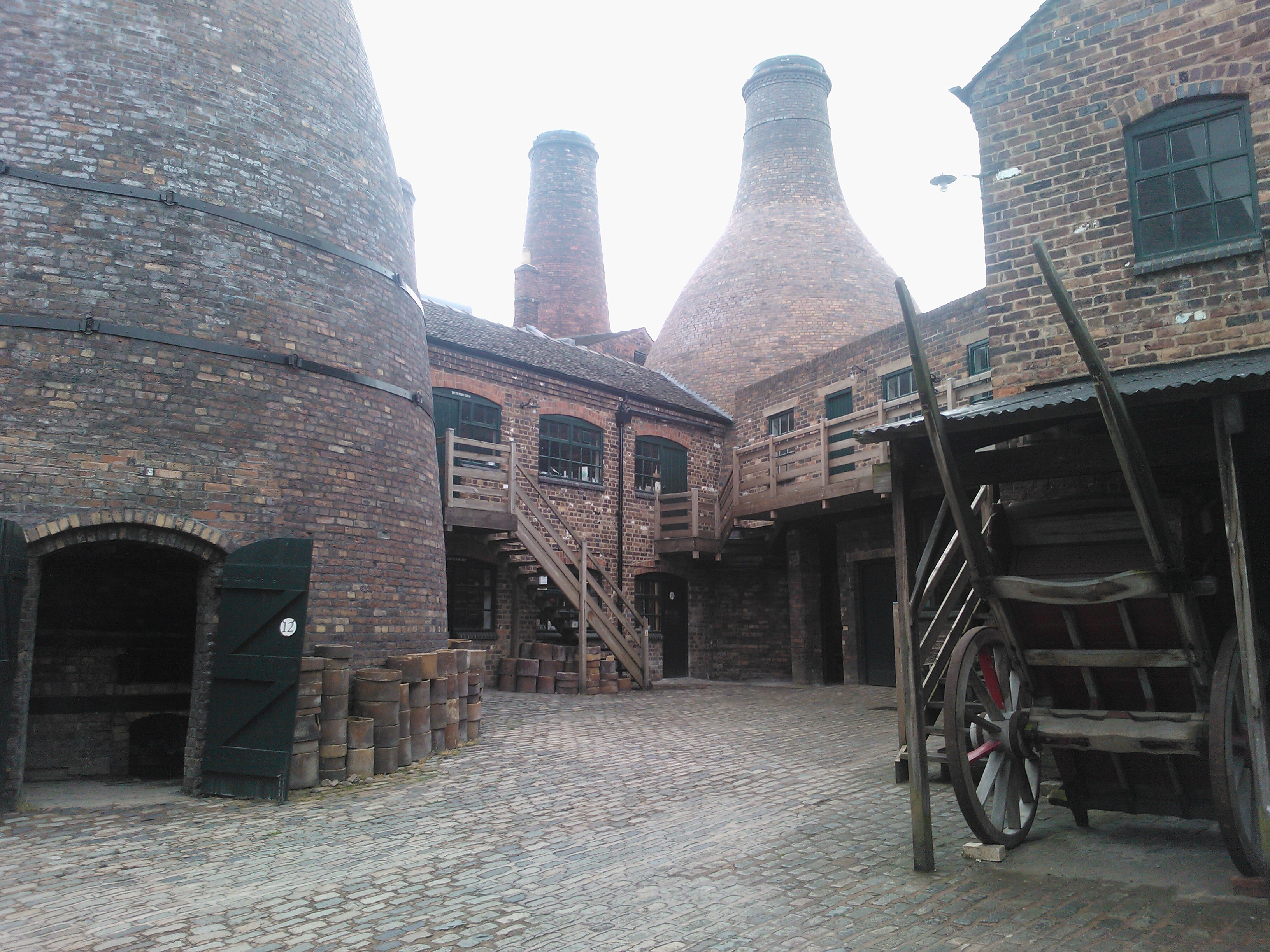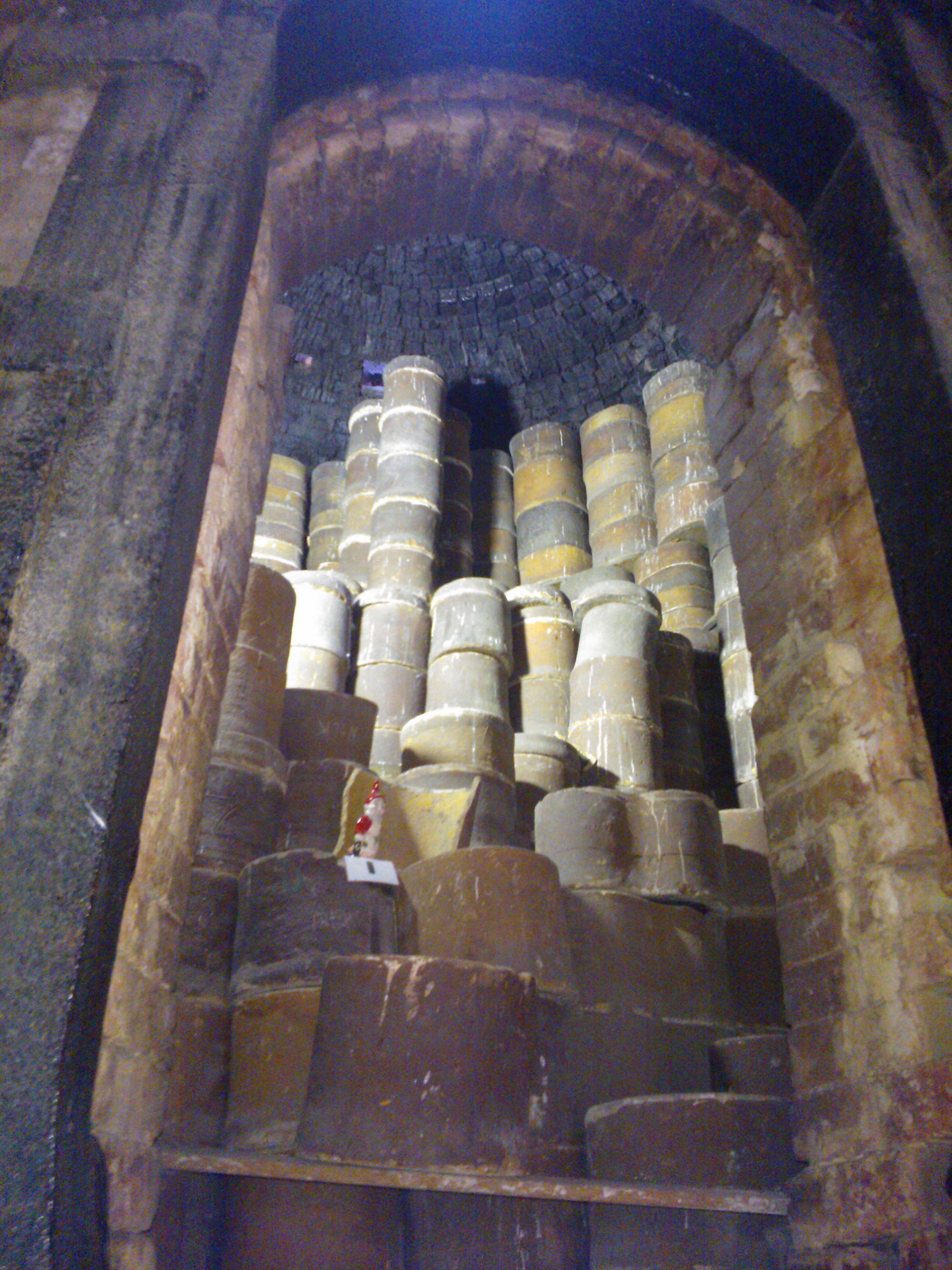Longton is one of the six towns (strangely enough always referred to as the five towns) that constitute "The Potteries". Each of the towns had its own particular style of pottery and Longton specialised in fine bone china (Wedgewood was also based there). But for the purpose of this blog, Longton was where the Gladstone Pottery was, and where The Gladstone Museum is. The story of the rise and ultimate decline of this area is a fascinating one and if you want a real feel for how it felt to work and live in the potteries in their heyday then this is the place to come to.

Longton in the 19th century had over 2000 bottle ovens . They were pretty much everywhere, and being coal fired and very inefficient, they filled Longton with acrid black smoke. As a result Longton had the shortest life expectancy of anywhere in the country (46 years provided you made it to adulthood) with one in three children dying before the age of 5.
Like most of the jobs created in the new industries of the industrial revolution, work in the potteries was often hard, and when it wasn't, it was slowly and silently sending you to your grave before your time. The toughest of all was reported to be the "drawing" of the kiln after firing. This was basically unstacking the "saggars" (large handmade pots in which the bone china ware was fired to protect it from discoloration from the smoke and ash in the kiln atmosphere). The masters would want the kiln unpacked as soon as possible after firing so men would go into a cruelly hot kiln and in darkness unstuck the saggars. They would have to wear thick clothing to potect their skin from being burned, and a wet towel on their head. "Drawers" reputedly rarely lived to see forty.
Often entire families worked in a pottery. There were jobs for children as young as five; a little girl might turn a handle all day to rotate a potter’s wheel. A young boy might make saggar bottoms, beating out flat roundels of clay with a 15 kilo wooden mallet. The heaviest tasks were performed by men, but regardless of the difficulty of the task, women were always paid considerably less than men (unenlightened times . . .).

Health problems were often related to inhaling silica dust – "potter’s rot" or silicosis, but also ingestion of lead used in the glazes. More lead in a glaze leads to a shinier more rich and lustrous finish, but also makes the glaze more toxic to work with. Those who worked with it on a daily basis, their bare arms steeped in it, or adding decoration with it and then licking the brush, would often contract lead poisoning.
In spite of life being short and brutal, workers reported that the atmosphere in The Gladstone Pottery was jovial, workers often being like one big family – which is nice to know.
The bottle ovens of Longton have all but disappeared. Once the clean air act was introduced in 1956 they had outlived their useful purpose, and over the 50s 60s and 70s were for the most part pulled down. The kilns at The Gladstone Pottery were fired for the last time in March 1960. Fortunately, a group of local people were keen to save part of the traditional landscape of the potteries and at the eleventh hour the Gladstone was saved from demolition to be saved as a museum. Selected as a good example of a typical medium sized "potbank" the site became The Gladstone Museum, allowing future generations to experience and appreciate something of what it was like to work in the potteries.
So you can lift a saggar (provided you don’t have a hernia), wonder at the size of the inner chamber of a bottle oven piled high with saggars, and to some extent (though without the noise and dust) feel what it must have been like to have spent your days in such a place.

You can watch a potter throw a pot on the wheel – though back in the day a he would have thrown a thousand pots in single a day – all work was piece work. You can see a demonstration of "slip casting", and also see a demonstration of flower making. The latter is done by a woman who has worked all her life making flowers in the potteries also on a piece work basis and who would once have made circa 100 blooms an hour. She is one of only 9 flower makers left in Longton, and perhaps one day there will be no-one with the skill and speed to perform the task. Having always disliked those little dishes you can get with ceramic flowers in them, I now look at them with new eyes, with awe and appreciation for the skill of the maker.
When we think of a potter we tend to think of a studio potter: throwing, decorating, earning perhaps a modest wage but with a rewarding and satisfying lifestyle. The Gladstone Pottery couldn’t be more different. It was tough work, it was repetitive, no-one in fact made an entire piece. And yet in spite of all this, there is something noble in the heritage of Longton and the other towns of the potteries.
The Gladstone Museum makes us very aware of the terrible suffering endured by workers in the potteries, while still allowing us to celebrate the rich heritage of their contribution.




